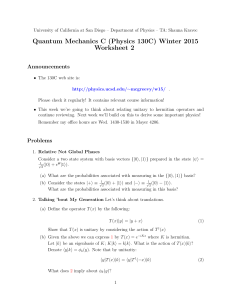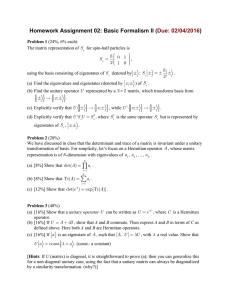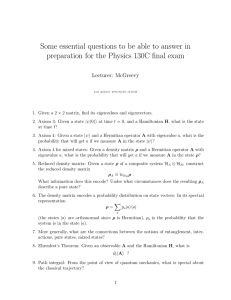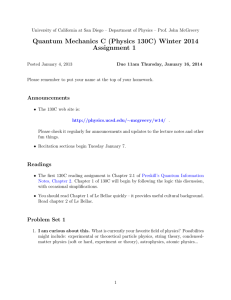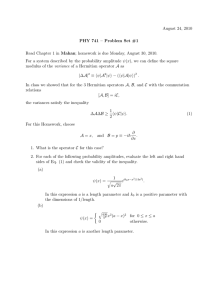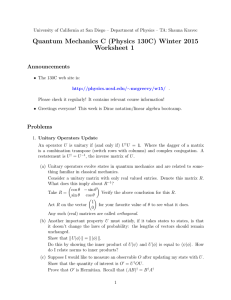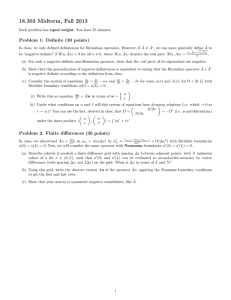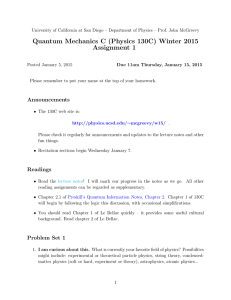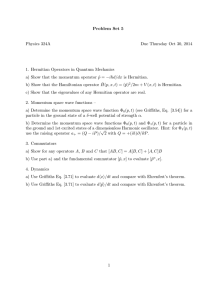Quantum Mechanics C (Physics 130C) Winter 2014 Worksheet 2
advertisement
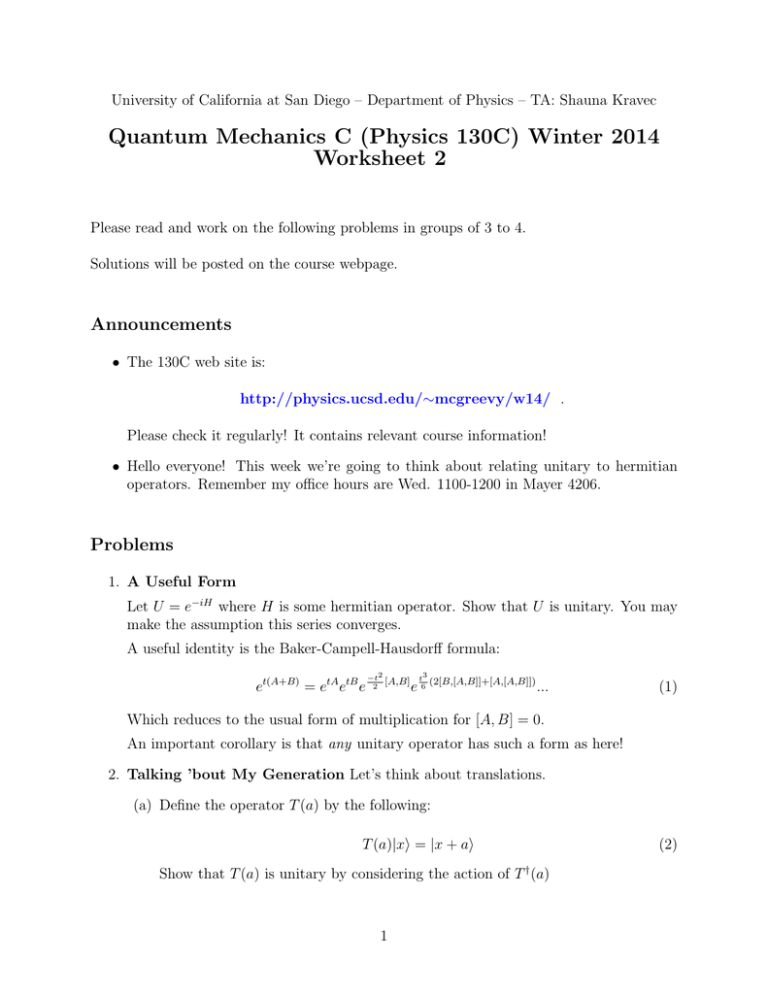
University of California at San Diego – Department of Physics – TA: Shauna Kravec Quantum Mechanics C (Physics 130C) Winter 2014 Worksheet 2 Please read and work on the following problems in groups of 3 to 4. Solutions will be posted on the course webpage. Announcements • The 130C web site is: http://physics.ucsd.edu/∼mcgreevy/w14/ . Please check it regularly! It contains relevant course information! • Hello everyone! This week we’re going to think about relating unitary to hermitian operators. Remember my office hours are Wed. 1100-1200 in Mayer 4206. Problems 1. A Useful Form Let U = e−iH where H is some hermitian operator. Show that U is unitary. You may make the assumption this series converges. A useful identity is the Baker-Campell-Hausdorff formula: et(A+B) = etA etB e −t2 [A,B] 2 t3 e 6 (2[B,[A,B]]+[A,[A,B]]) ... (1) Which reduces to the usual form of multiplication for [A, B] = 0. An important corollary is that any unitary operator has such a form as here! 2. Talking ’bout My Generation Let’s think about translations. (a) Define the operator T (a) by the following: T (a)|xi = |x + ai Show that T (a) is unitary by considering the action of T † (a) 1 (2) (b) Given the above we can express 2 by T (a) = e−iKa where K is hermitian. Let |ki be an eigenbasis of K. What is the action of T (a)|ki? Denote hx|ki = φk (x). Using the above equation the following expressions: hx|T (a)|ki = hx|T † (−a)|ki (3) What does 3 imply about φk (y) where a = −y and x = 0? (c) Recall that plane waves have momentum related to their de Broglie wavelength: p = ~k Rewrite T (a) with the implied expression for the operator P . This is why we say momentum generates translations! ∂ T (a)|a=0 = − ~i P We can use a clever trick to get P on its own: ∂a What’s the expression for hx0 |P |xi? You will get a derivative of a delta function. Recall that by some integration by parts: Z Z 0 dxδ (x − y)f (x) = 0 − dxδ(x − y)f 0 (x) = −f 0 (y) (4) Use 4 to derive the familiar expression for P by considering: P ψ(x) = hx|P |ψi 2 (5)
